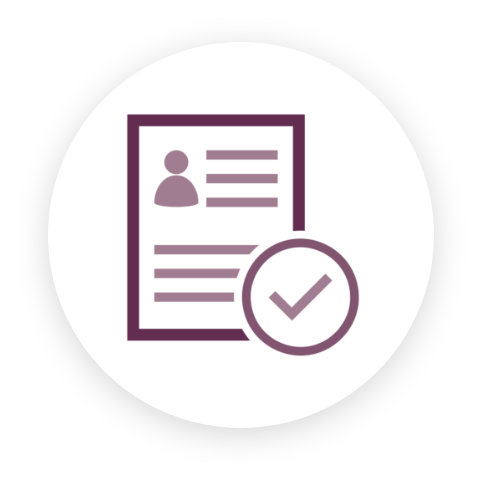BOP NEWSLETTER • June 2023
Now Arriving: “Uber-like” Staffing Options
By Alan Twigg & Tim Twigg
The convergence of Uber-like technology, the ongoing staffing shortages in dentistry, as well as enterprising companies, are bringing the emergence of app-based temp services for dental assistants and hygienists, and even front-office and associates.
Unlike traditional temp agencies typically operating in one city or defined geographic areas, these companies have a much bigger footprint. Via their app/software/platform, they act as the intermediary between the dental office and a pool of available workers.
No doubt these companies represent a creative solution and another option for your hiring toolbox. Since they are gaining popularity and expanding nationwide, we want to share some pros and cons to take into consideration if you’re thinking about using these new tools.
Geographic Availability
Currently, there isn’t (yet) a nationwide company. And, as is the case with other sharing-economy-platforms, the availability of potential workers is commensurate with population size. Practices in smaller towns may struggle to find sufficient quantities of available workers on these apps, while offices in larger cities may have dozens or hundreds of workers to choose from.
Vetting
Vetting varies from company-to-company, so it is important to make sure they or you are ensuring the due diligence needed for someone to work in your practice. Most do basic identity verification to make sure the individuals are who they say they are, and perform individual license/certification checks based on the particular state. There is also variation in performing basic criminal background checking, how extensive it is, and what is checked.
Important Reminder: as a dental practitioner, keep in mind that the ultimate responsibility is yours to ensure that all workers in your practice have the appropriate credentials.
You Are Being Reviewed Too!
Similar to other platforms, there is a dual-review process: workers can give you and your practice a rating, and the practice can give the worker a rating (on a 5-star scale). If a worker or practice’s rating falls below a certain level, they are excluded from the app. This can help ensure everyone stays on their best behavior.
W-2 Employee vs 1099 Contractor Status
This is the big one, and this overall theme of Employee vs Contractor has been the source of ongoing litigation with Uber and similar companies. When a temp works in your office, are they a W-2 employee, or a 1099 independent contractor? In a traditional temp agency, the workers are W-2 employees of the temp agency, the agency charges a fee to the practice, and the workers are not employees of the practice itself. However, like Uber, these new temp app companies position themselves as just a platform for linking employers and workers.
A quick reminder on the rules: employee or contractor classification is based primarily on IRS statutes. The IRS has various criteria for determining whether a true contractor relationship exists. This includes many details such as: who controls the schedule, who supplies the tools, whether the worker has their own business, whether the worker performs the job for one employer or multiple employers, whether the worker is performing a job that other W-2 employees already perform, etc. This is not a super clear line-in-the-sand evaluation. One has to lay out all of the details and then make a judgment call about whether a contractor relationship exists in each individual situation.
Comparing each company and how the classification works, there are significant differences. As always, the absolute safest approach is to classify your worker as a W-2 Employee. While this is not the most convenient approach, it eliminates the risk of misclassification and possible liability as a result.
Worker’s Comp, Liability, and Malpractice Insurance
Depending upon the employment relationship, worker’s compensation, unemployment, and malpractice insurance may be in play. These companies vary with respect to the employment relationship, and this can impact whether a particular insurance applies. If the worker is classified as a W-2 employee, then they would fall under the practice’s existing worker’s compensation, unemployment, and malpractice insurance. However, if the worker qualifies and is treated as a 1099 contractor, then most of these insurances would not apply. Definitely read the fine print and ask about these details before you bring in a temp via one of these apps.
From Temp to Regular Hiring
What if you want to hire a temp on a non-temporary basis to fill a “permanent” position in your office? Each company approaches this differently. Some of them act as just a job board like Indeed or Craigslist. In this regard, workers and employers can find each other and agree to work together on a regular ongoing basis, without a placement or finder’s fee. Other companies function like a traditional temp agency and charge a placement or finder’s fee to the practice, based on the position.
How does the money change hands?
Some of the temp companies allow you to pay the worker directly, while others require or offer you the option of paying within the app.
This begs an important question: If the worker has 1099 contractor status and they are paid via the app, whose business name is on the worker’s 1099 form? In all cases (when paying via the app), the business name that will be on the 1099 is the temp company’s name.
On the surface this may seem like a way to insulate the practice from liability, since the temp company is listed on the 1099. However, if the IRS or state labor board were to take action, the practice could potentially be included in the review process since the practice received the actual benefit of the work. This represents a new gray area for compliance and will (hopefully) become clearer as this technology develops.
Other Considerations
As is the case with any temporary worker, keep in mind they are strangers to you. There are unknowns about their capabilities, skills, communication, attitude, etc.
Final Thoughts
Temp apps represent a potentially new “cool tool” for your toolbox and something to consider when/if you need a temp. They have the added benefit of economically supporting the transition from temp to regular employment. Based on the app, your state, your utilization, and risk tolerance, these may prove helpful. Do your due diligence and make sure you still have your employment compliance bases covered. Remember that you are being reviewed, too! Pay attention to your office culture, employee experience, pay/benefits, employee engagement, workplace appreciation, and everything else that would make your office a coveted and amazing place to work.

































